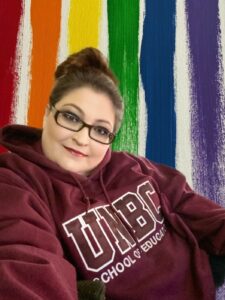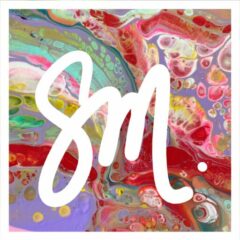
“The world is better because you are in it!” is what I want every student to understand when they are done with their time in my classroom. They need to know they are seen, heard, and valued in this world, that their presence matters, and that they can make a positive difference.
I am a relationship-based practitioner. I see each learner as an individual human first. A unique person who has a history, needs, and can learn. This makes me an inclusive teacher. I am driven to ensure my students know they are welcome and safe. Students under toxic stress do not learn, and I understand that stressors can come from many sources, from not eating breakfast through invisible ones like intergenerational trauma. Students of different learning needs, ethnicities, religions, cultures, languages, socio-economic factors, 2SLGBTQI+, and physical and mental health will find community in my classrooms.
Prior to knowing what it was, the Circle of Courage had been aligning with my instinctual teaching style forming the foundation of my pedagogy. The more I have studied it, the more passionate I have become about embedding Indigenous worldviews throughout my practice. The climate and culture of my classrooms will place value on a social curriculum equal to an academic one, where I strive to help students seek balance in their four quadrants of Belonging, Mastery, Independence, and Generosity. I feel empowered to move forward in creating classrooms where I am not teaching Indigenous epistemologies like a foreign culture but instead able to fully integrate it for what it truly is – a mosaic of First People’s cultures which exist nowhere else on earth.
Universal Design for Learning, combined with differentiation based on individual needs, is the most effective tool for engaging a diverse range of classroom learners. I opt first for Tier 1 support for students and believe keeping students in a classroom rather than pushing out is how an inclusive community is created for all learners. I prefer to collect evidence over time which is a sound practice for summative assessment of learning. Knowing your learners through continual instructional feedback is the best way to guide learning. Every student is good at something, and the students who have the most significant struggles will often have the greatest strengths. Young children require time and patience to become students. As such, leadership among learners is often an effective approach, especially when combined with increasing self-governance by age in a democratic classroom.
My life experiences have taught me that something unexpected, be it in learning or otherwise, may happen tomorrow, altering who I am and fundamentally shifting my lens. Therefore, I am committed to lifelong learning as a practicing educator, knowing that my teaching philosophies and methods will change over time. Lastly, I know that my pedagogical thinking will be stretched and tested as it evolves through my practice and that not everyone will agree. I will err on the side of science and hold to my ethical responsibilities while following my heart, as it has led me here.

Sara McManus
Revised Spring 2023
